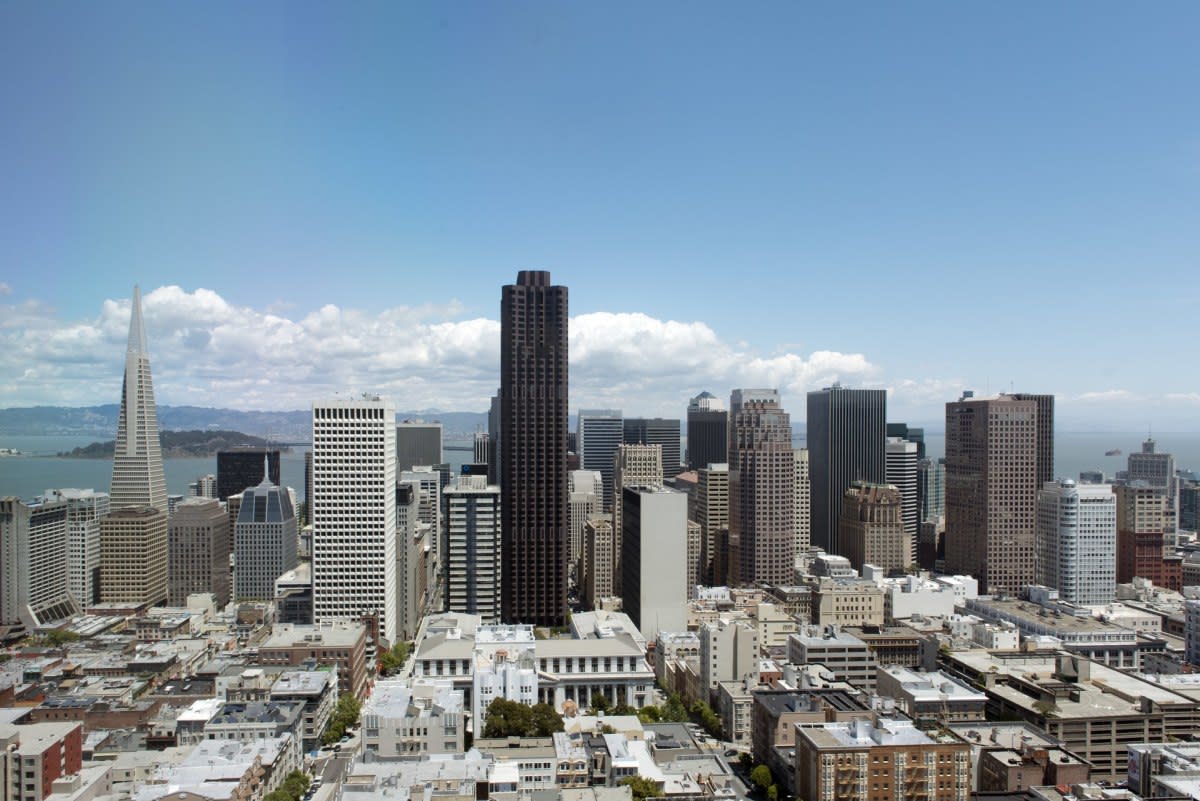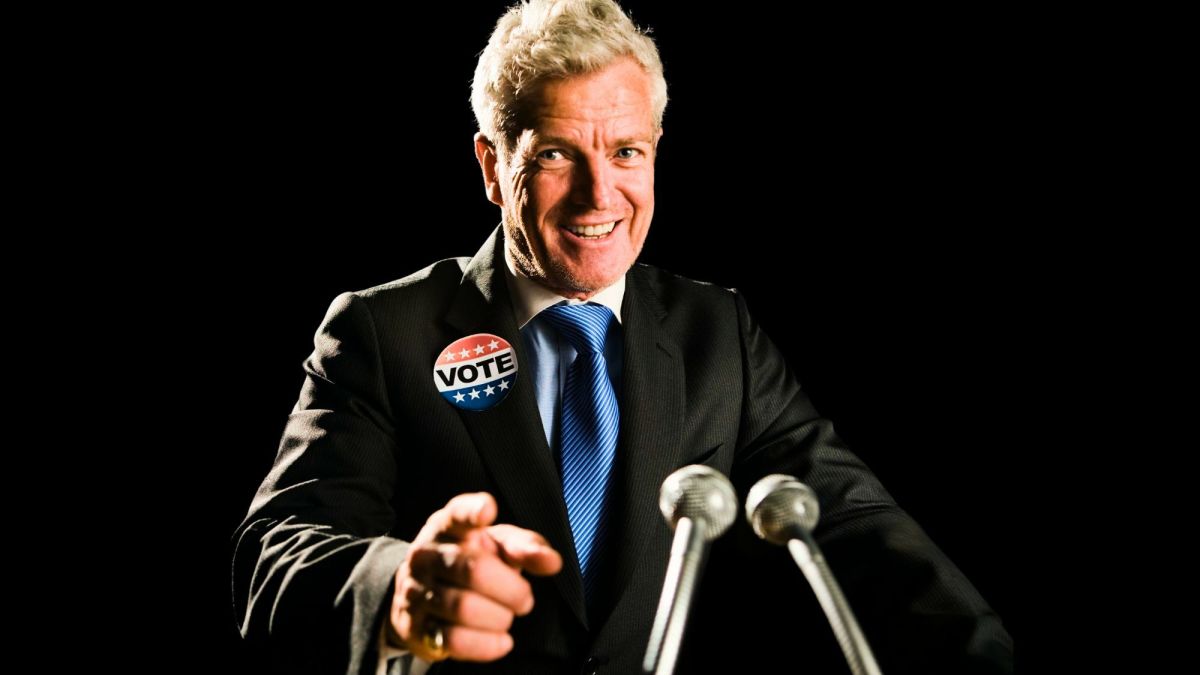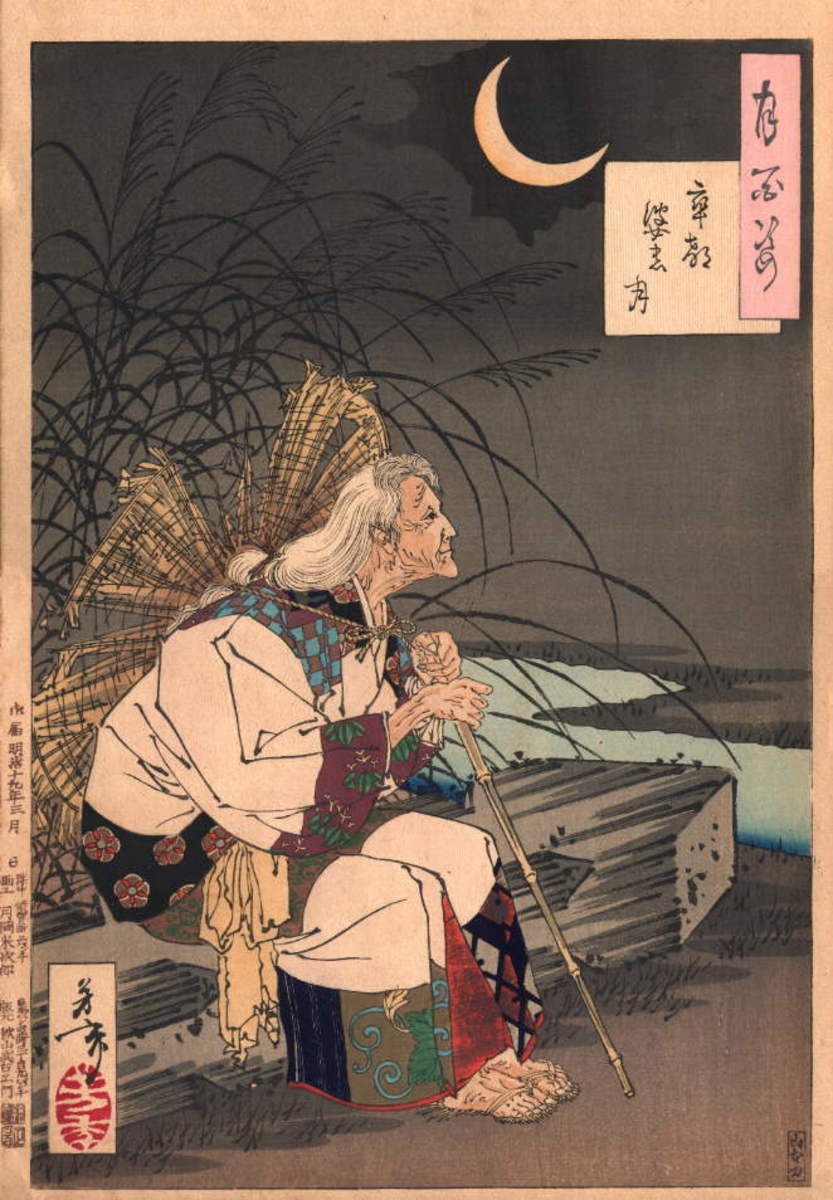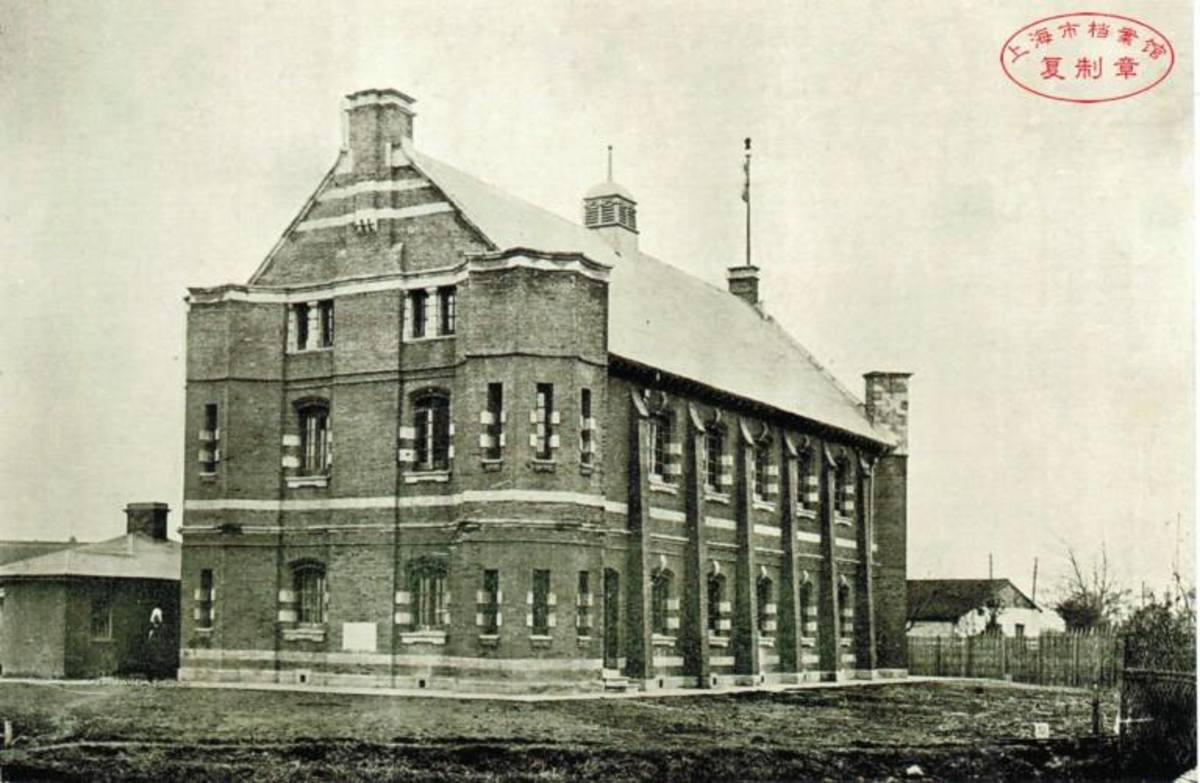Imprisoned Leader: Aung San Suu Kyi
Aung San Suu Kyi
![By World Economic Forum from Cologny, Switzerland (Klaus Schwab and Aung Sun Suu Kyi) [CC-BY-SA-2.0 (http://creativecommons.org/licenses/by-sa/2.0)], via Wikimedia Commons By World Economic Forum from Cologny, Switzerland (Klaus Schwab and Aung Sun Suu Kyi) [CC-BY-SA-2.0 (http://creativecommons.org/licenses/by-sa/2.0)], via Wikimedia Commons](https://usercontent1.hubstatic.com/8828998.jpg)
Nothing Could Hold Her Back
Aung San Suu Kyi never really got to know her father before he died when she was three. She knew a lot about him; General Aung San was a national Burmese hero, fighting for Burma’s independence from Britain only to be assassinated on the eve of its liberation. Suu Kyi learned about him through books and through the stories her relatives and his friends told, and while she admired him greatly, Suu Kyi never planned to be anything like him.
Born June 19, 1945, Suu Kyi grew up with her mother and two brothers in Rangoon, Burma (one brother tragically died by drowning). Her mother, Khin Kyi remained in the political sphere after the death of her husband and was appointed ambassador to India. Suu Kyi went with her, attending college there and earning a degree in politics and becoming an admirer of Mahatmas Gandhi and a believer in civil disobedience. Later, she went on to Oxford University in England and achieving a B.A. in philosophy, politics and economics in1964 and briefly working as a researcher of Burmese literature at the University of London. Following her graduation, Suu Kyi worked for three years at the United Nations in New York City, working on the staff of the U.N. secretariat.
When Suu Kyi was at Oxford, she met a fellow student, Dr. Michael Arias, who was studying Tibetan culture, something Suu Kyi was also interested in. They fell in love, and every single day that she lived in New York Suu Kyi wrote to her future husband. They became engaged in 1971 and married in 1972, settling down in England where they raised their two sons, Kim and Alexander.
Life seemed peaceful for Suu Kyi until that day in 1988 when she discovered that her mother, still living in Burma, had suffered a severe stroke. As any loyal daughter would, Suu Kyi packed her bags and rushed home, promising her family that she would be back as soon as her mother was well. That was her only intent.
It wasn’t long after arriving in Burma, now called Myanmar, that Suu Kyi discovered that things in her native country had changed for the worse; an oppressive military dictatorship had taken over Myanmar, denying its citizens many basic human rights. Though Suu Kyi went to care for her mother, she could not help but see what was going on, how so many people were suffering, being abused, threatened and terrified.
“As my father’s daughter,” Suu Kyi would later say, “I felt I had a duty to get involved.”
Aung San Suu Kyi greeting supporters from Bago Region on 14 August 2011
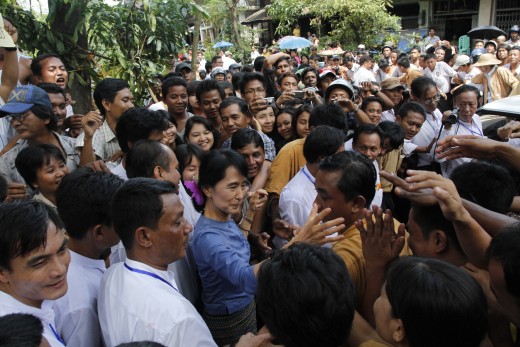
Becoming heavily involved with politics, Suu Kyi helped to create the National League for Democracy, a political group aimed at dismantling the military junta and installing democracy as the new form of government through peaceful demonstrations and legal elections. On August 26, 1988, with a massive poster of her father behind her, Suu Kyi stood in front of the glittering Shwedagon Pagoda, one of the holiest sites in Myanmar, and gave a beautifully eloquent, passionate speech to a half a million people who had gathered to demonstrate. She called for an end to the government’s use of violence on unarmed protesters and proposed that a committee be formed to work with the junta to resolve the crisis. Her message of hope and peace and vows of freedom roused the Burmese to ecstatic cheers, and Suu Kyi was made leader of the National League for Democracy.
The Burmese government, on the other hand, wasn’t impressed. And they weren’t pleased. On April 5, 1989, as she was walking down a street, Suu Kyi was confronted by two soldiers. The men ordered her to stop and threatened to shoot her if she didn’t. A firm believer in non-violence, Suu Kyi continued to walk closer and closer to them. Angry, the soldiers raised their rifles and gave her one last warning, but before they could pull the trigger an officer quickly stepped in and told them to lower their weapons.
Undeterred, Suu Kyi and her organization pressed on and ran in the national elections. Suu Kyi and her party won with 82% of the vote, making her Myanmar’s new leader and the National League for Democracy the new ruling party.
The junta, however, didn’t care. Ignoring the election results, they declared their candidates the winners, arrested and tortured several of Suu Kyi’s party members, and placed Suu Kyi under house arrest. Suu Kyi essentially woke up to find that the Burmese army had surrounded her house and were building barbed wire fences and cutting her phone lines. Not wanting to risk a revolution by killing Suu Kyi and turning her into a martyr, the junta told her that she was free to leave at any time, but she would never be allowed to return to Myanmar. Suu Kyi shot back, “You will have to take me to the airport in chains, because otherwise I will never leave!”
For the next fifteen years, Aung San Suu Kyi was forbidden from ever leaving her home or ever reaching out to anyone on the outside. She frequently ran out of food and was seriously weakened by hunger. Her house began to fall apart in Myanmar’s heat and humidity, the walls blackened with mildew. Her gardens became infested with poisonous snakes. It was maddening, being under house arrest; Suu Kyi was under constant surveillance by the posted guards, security cameras, hidden cameras, and, when she was allowed to use the phone, tapping into her calls.
To keep her sanity Suu Kyi kept a strict routine: waking at 4:30 A.M. for meditation (she is a devout Buddhist) and exercise, read books, played guitar or piano and listened to music. She thought of herself as being like a splinter of glass, “with its sharp, glinting power to defend itself against hands that try to crush.”
In 1991, Suu Kyi received the Nobel Prize for Peace, making her the first incarcerated person to win one. It was presented to her by her husband and their sons, making this one of the last times she ever saw them for many years. She was also awarded $1.3 million dollars in prize money, which she quickly used to establish a health and education fund for girls.
After six years, pressure from foreign government caused the Burmese junta to lighten up slightly on Suu Kyi’s house arrest, allowing her to leave her home for short periods of time and speak to people who came to the barbed wire fence to meet her. Every weekend, her supporters arrived with amplifiers that they hoisted into the trees, and Suu Kyi would climb up onto a desk so people could see her. She gave speeches to ever growing crowds, promising them that the junta wouldn’t last and that they would be victorious. As soon as she concluded, Suu Kyi urged the crowds to flee from the area quickly, so that the soldiers wouldn’t arrest anyone. She always lingered outside to make sure everyone had gotten away. On one occasion, her car was chased down by a gang of thugs on motorcycles wielding chains and pipes, allegedly hired by the junta to frighten her.
Once the crowds swelled to five thousand people every weekend, the junta had enough of Suu Kyi and revoked her ability to speak and put her back under house arrest. They did occasionally allow a few political diplomats to visit her, to show that they really weren’t all that bad.
Aung San Suu Kyi gives speech to supporters at Hlaing Thar Yar Township in Yangon, Myanmar on 17 November 2011
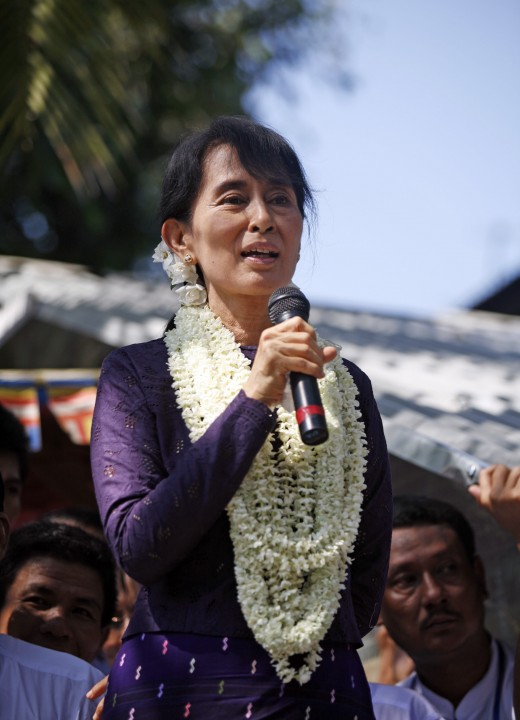
Then, the unthinkable happened; Suu Kyi’s husband Michael became ill with terminal prostate cancer in 1997. Suu Kyi was horrified and wanted to be with Michael, but she couldn’t leave Myanmar and Michael wasn’t allowed into the country. Appeals to the Burmese government poured in from world leaders such as Pope John Paul II to allow Michael to visit Suu Kyi were met by deaf ears. The junta told Suu Kyi that she could go to see Michael and return any time that she wanted, but Suu Kyi didn’t trust them. Michael died on March 27, 1999, his fifty-third birthday, without ever seeing Suu Kyi again.
In 2003, during one of her rare breaks from house arrest, Suu Kyi and several members of the National League for Democracy were attacked by a government sponsored mob in which 70 members of the NLD were killed. Suu Kyi narrowly escaped death herself. In the aftermath, Suu Kyi was arrested and spent three months in jail before returning to house arrest. No one has been held responsible for the deaths.
By now Suu Kyi’s dedication to her country and refusal to resort to violence was making her a legend around the globe. Demonstrations were still being held, including one led by Buddhist monks who had stopped at her house to bless her. This landed Suu Kyi in jail for several months. The government would then relax its restrictions on her, only to clamp down harder at what they perceived to be the slightest provocation. The junta was enraged when in 2009 an American named John Yettaw managed to hop the fence and swim across the lake to Suu Kyi’s house. Upon his arrest on his return trip he claimed he had gone to Suu Kyi’s house because he had a divine vision warning him that there would be a terrorist attack on her life and he had to alert her. The junta didn’t care what his story was, they arrested Suu Kyi for violating the terms of her house arrest and she was now faced with five years in a hellish prison. What followed was a farce of a trial, but with the angry eyes of the world watching them, the Burmese government decided that Yettaw was more the “guilty” one, not Suu Kyi. Suu Kyi spent her 64th birthday in prison, sharing her cake with her guards before being sentenced to three years of hard labor.
The trial was the breaking point for many world nations, among them the United States, Japan, Thailand, Western Europe, South Africa and the U.N. The U.N. Secretary General Ban Ki-Moon went to Myanmar to negotiate Suu Kyi’s release, but the Burmese president essentially told him to go to hell.
Still, the Burmese government was falling apart. Its people were outraged. World leaders were condemning them. Knowing that to commit Suu Kyi to her sentence would destroy them, in 2009 the junta reduced her sentence to—surprise surprise—house arrest. When U.S. President Barak Obama and British Prime Minister Gordon Brown both appealed to the Burmese junta to release their political prisoners, Myanmar ignored them and dismissed Suu Kyi’s appeal almost out of hand in order to keep her from running in the 2010 elections.
But the pressure and Suu Kyi’s own dogged persistence freed her on November 13, 2010, and on April 1, 2012, the junta was removed and she was elected to the Burmese parliament. While she would like to run for president, the Burmese constitution was deliberately written to keep her from running because she “owed allegiance to foreign powers”—meaning her two sons.
Though, considering how much Aung San Suu Kyi had dealt with in her life before, I’m sure this will be little more than a bump in the road for her.
Aung San Suu Kyi works referenced:
The Usborne Book of Famous Women, Phillippa Wingate et al 1997
The Complete Idiot’s Guide to Women’s History, Sonia Weiss et al 2001
Lives of Extraordinary Women, Kathleen Kull et al 2000
Aung San Suu Kyi http://en.wikipedia.org/wiki/Aung_San_Suu_Kyi#Periods_under_detention
Aung San Suu Kyi http://www.nobelprize.org/nobel_prizes/peace/laureates/1991/kyi-facts.html
Aung San Suu Kyi http://www.biography.com/people/aung-san-suu-kyi-9192617?page=2
“Will Aung San Suu Kyi Ever be President of Burma?” http://www.bbc.com/news/world-asia-26043931
Aung San Suu Kyi http://buddhism.about.com/od/whoswhoinbuddhism/p/aungsansuukyi.htm


